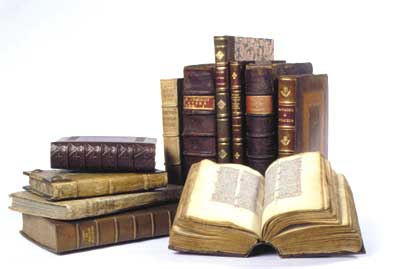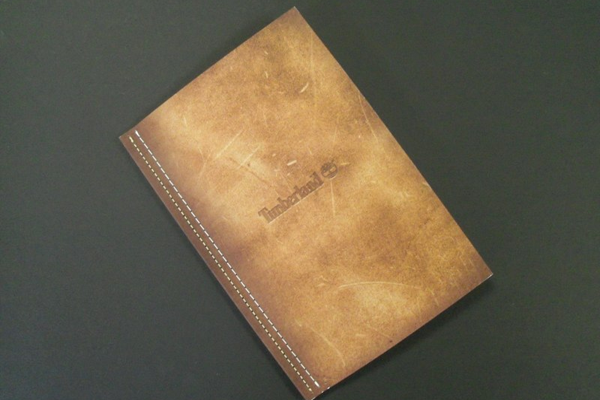Bookbinding refers to the physical assembly of a book from a stack of in-order papers comprising the book's pages. The stack is bound together along one edge by either sewing through them or by applying a layer of flexible adhesive. It's an age-old process that began in the first century A.D. Before that time, "documents" were clay tablets or long rolls of papyrus or cloth. Learn more about bookbinding and other forms of custom finishing work in the article below.
The First "Books"
During the first century, books were confined to religious codices (classic manuscripts). The pages were made of sheepskin vellum that were bound into volumes which were easier to read from than scrolls or clay tablets. The vellum was an improvement, too, since one could write on both sides, whereas cloth was strictly a "one-sided" material, meaning scribes could only write on one side.
For the next one thousand, four hundred years, this early form of bookbinding was mainly the domain of monks from various religious orders.
The Demand for Books Grows and Bookbinding Evolves
Sometime around 1450, Johannes Gutenberg created the first printing press, eliminating (or at least reducing) the tedious and often months-long task of hand-writing books. With printing now an automated process, the demand for bookbinding began to grow and bookbinding became more of an automated system as well, although it still entailed a great deal of skill and handiwork. Still, since books were now easier to produce, they started to become available to the mainstream, and were no longer confined to religious libraries. The next big breakthrough in the art of bookbinding wouldn't appear until the 19th century and the advent of the industrial revolution.
New Paper and a Special Bookbinding Machine
The first industrial revolution in the early 1800s, saw the advent of paper made from wood pulp. As you can imagine, this greatly reduced the cost of paper, making books (and bookbinding) even more available to the public. By the second half of the 1800s, bookbinding automation really began to progress, and in 1856, David McConnell Smyth invented the first sewing machines designed specifically for bookbinding. He patented his invention in 1868, and his company, the Smyth Manufacturing Company, began manufacturing them in 1880. In the following three decades, Smyth expanded his business to include machines made for gluing, trimming and case-making (case = hardcover). Some of his machines are still being used to this day!
"We are thickly layered, page lying upon page, behind simple covers. And love - it is not the book itself, but the binding."
- Deb Caletti
Perfect Binding
The art of perfect binding (paperback or paper-covered books) was invented in 1895, but didn't really "catch on" until 1931, when German publisher Albatross Books, introduced the first paperbacks as an experimental endeavor. A few years later -- in 1935 -- Penguin Books adopted the format for their popular line of classics. Then in 1939, American publisher Pocket Books began producing popular hardcover titles in paperback or perfect bound format. They were quickly accepted by the American public and soon everybody was reading paperback books.
Early perfect bound bookbinding used cold glues, which became brittle over time, causing books to fall apart. In 1940, Dupont introduced a hot-melt adhesive perfect binding process, resulting in more durable, longer-lasting paperback books.
The Post War Era of the 'Fifties Brings New Methods of Bookbinding
Plastic comb binding and Velobinding became popular office document binding methods in the 1950s and '60s. They involved punching the sheets and then loading them into a binding element. Powis, a company started by Kevin Parker in 1983, created an upgrade on the punch and bind process of previous decades with its introduction of the Fastback Binding System, which uses special strips, coated with thermoplastic adhesives to create the binds.
People Still Want Books
Some believed that the advent of e-readers would reduce the demand for printed books, but so far, 17 years into the 21st century, this has not been the case. More books are being published today than ever before. It appears that the public still loves the printed word!
Accent Banner in Medford, Massachusetts provides many book binding solutions. The two most common are saddlestitching and over sewing. Contact us today to learn more!




